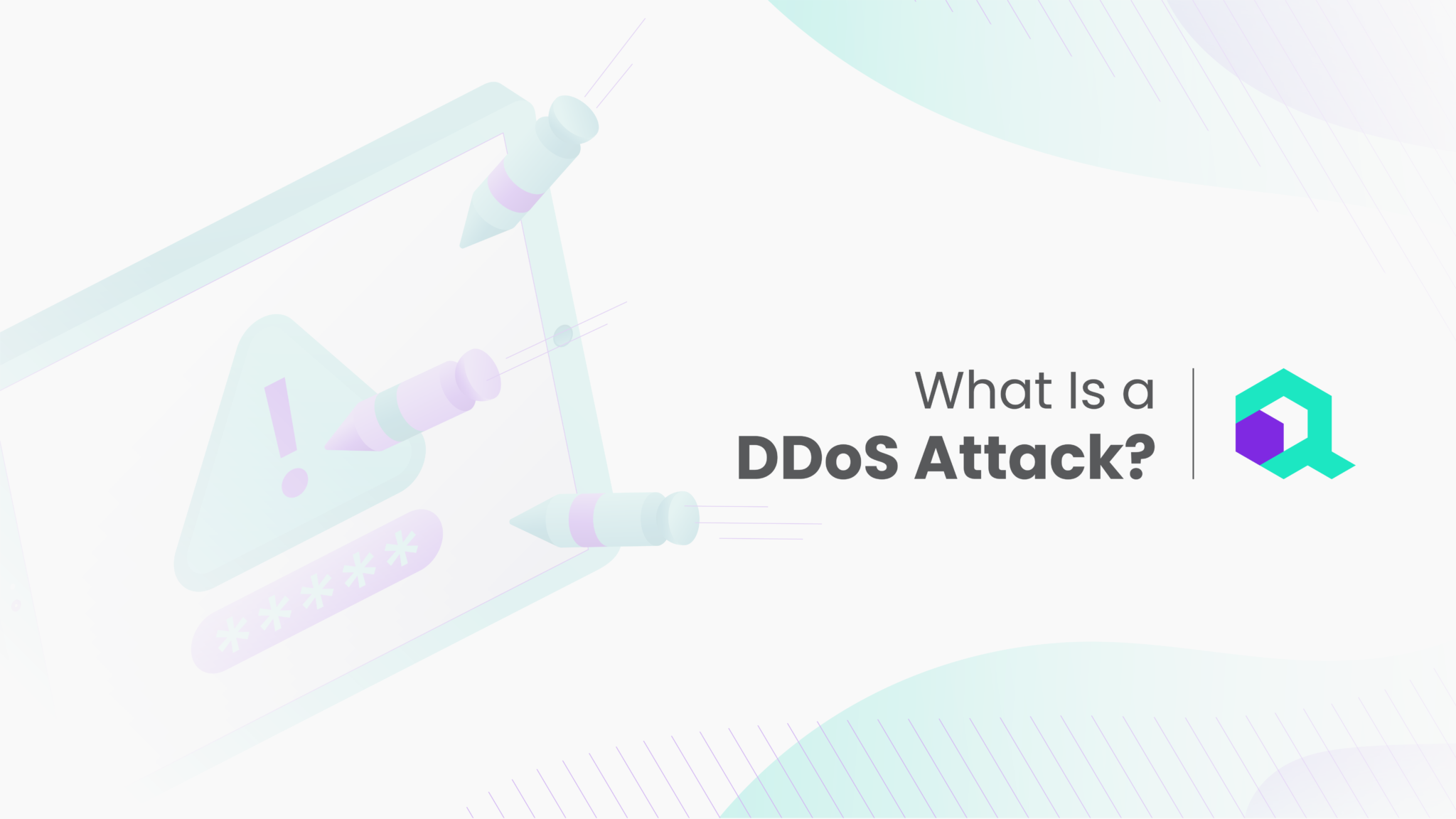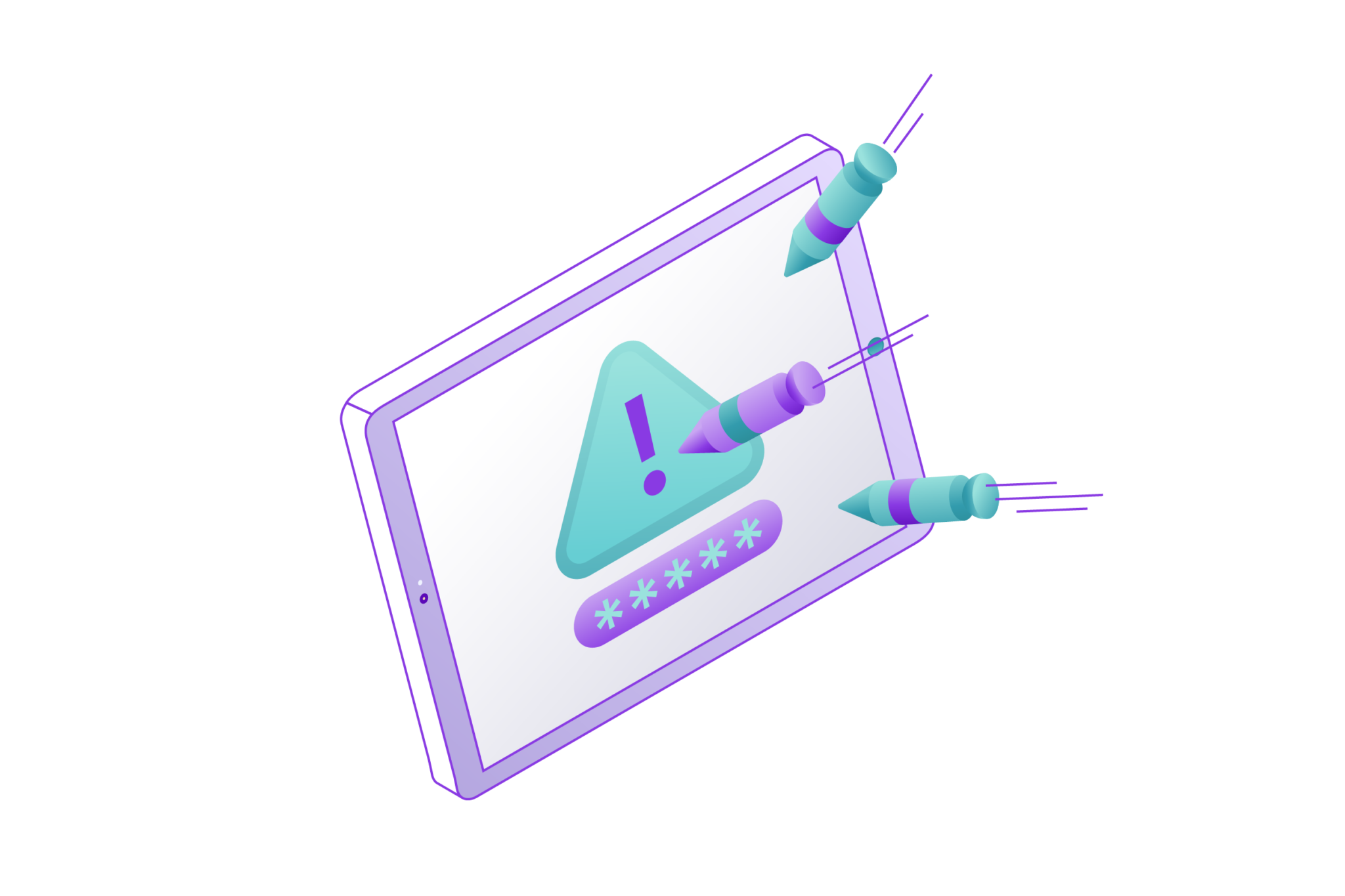
In our world today, where everything is connected online, keeping our digital spaces safe is super important. There are lots of dangers hiding on the internet, but one kind that really stands out is the DDoS attack. It’s a kind of attack that’s easy for bad guys to do but can cause a lot of problems. So, what’s a DDoS attack? Imagine it like this: if the internet is a highway, a DDoS attack happens when someone sends so much traffic to one place that nobody else can get through. It’s like a traffic jam on purpose, making it impossible for people who need to use that road to get where they’re going.
This article is going to take a closer look at DDoS attacks. We’ll learn how these attacks work, like how someone can create that big traffic jam on the internet highway. We’re also going to talk about why these attacks are a big deal, not just for big companies, but for everyone. When a website gets jammed up and you can’t use it, that’s annoying and can cause problems, right? And we’ll explore what we can do to stop these attacks, which is really important for keeping the internet a place where everyone can do what they need to do without getting stuck in traffic.
By understanding DDoS attacks better, we’re taking a big step towards protecting our online world. We’re going to dive into the sneaky tricks attackers use, figure out how these attacks can really mess things up for people and businesses, and learn about ways we can protect ourselves. It’s like learning the rules of the road and how to drive safely in that big internet highway. Knowing all this helps us be ready to defend against these digital traffic jams and keep the internet running smoothly for everyone.
What is a DDoS Attack?

When we talk about DDoS attacks, imagine a busy restaurant suddenly getting crowded with hundreds of people at once. But here’s the twist: these people don’t intend to order anything; they just want to fill up the space so that no real customer can get in. This is somewhat what happens in a DDoS (Distributed Denial of Service) attack, but instead of people and a restaurant, we have computer systems and a website or online service.
In a DDoS attack, the bad guys take control of many computers around the world. These aren’t just regular computers but can also include other devices connected to the internet, like cameras, home appliances, etc., that can send data over the network. All these controlled devices form what’s called a “botnet,” which is like a zombie army waiting for commands from the attacker.
Also Read: What Are The Future Outlook of Stablecoins? Find Out Here!
The attacker then uses this army to send tons and tons of fake requests to a specific website or online service they want to target. Think of each request as a person trying to get into our hypothetical restaurant. The goal is to send so many requests that the website’s server, which is like the restaurant’s door, can’t handle it anymore. This means real users can’t access the service because it’s too busy dealing with the fake requests.
There are different ways attackers can orchestrate a DDoS attack, kind of like different strategies to crowd the restaurant:
- Volumetric Attacks: This is the most straightforward method where the attacker just sends a massive amount of traffic to clog up the website’s bandwidth. It’s like sending as many people as possible to fill up every inch of the restaurant.
- Protocol Attacks: These attacks are a bit more technical and target specific areas of the network connection to disrupt the service. Imagine if someone found a way to make every door and window in the restaurant super slow to open, causing delays and frustration.
- Application Layer Attacks: These are sophisticated attacks that target specific parts of the website, like the menu or the ordering system, making them unusable. It’s like having all the fake customers ask complicated questions or make special orders that take up all the staff’s time.
By understanding these different types of attacks, we can better prepare and protect our online spaces from being overwhelmed by unwanted traffic, keeping the “restaurant” open for real customers.
The Impact of DDoS Attacks

DDoS attacks, or Distributed Denial of Service attacks, are like sudden traffic jams clogging up a highway, but instead of cars on a road, these are unwanted data trying to flood into a website or online service. Imagine if thousands of people were trying to get through a single door all at once; obviously, not everyone can fit through the door at the same time. In a similar way, DDoS attacks overload websites or online services with more requests than they can handle, making it hard or even impossible for real users to get through and use the service as they normally would.
This “digital traffic jam” can have serious consequences. For businesses, it can mean lost sales and customers if their websites are down. For services like online gaming or streaming, it can mean frustrated users who can’t access their games or videos. In more critical sectors, like healthcare or finance, the impacts can be even more severe, potentially disrupting essential services.
Behind these attacks, there might be different motives. Sometimes, people launch DDoS attacks to show off their hacking skills, to disrupt services as a form of protest, or to demand ransom by threatening or actually taking down services. Other times, these attacks could be used to distract security teams from other malicious activities happening at the same time.
To defend against DDoS attacks, organizations can use various strategies. These include identifying and filtering out malicious traffic, spreading out the incoming data requests across multiple servers or locations so no single point gets overwhelmed, and sometimes seeking help from specialized security services that can absorb and deflect the unwanted traffic.
Overall, DDoS attacks are a major concern for anyone running a service on the internet, highlighting the need for robust security measures to ensure that services can remain available and reliable for users who depend on them.
Why Do DDoS Attacks Happen?

DDoS (Distributed Denial of Service) attacks are a type of cyberattack where the attacker seeks to make a machine or network resource unavailable to its intended users by overwhelming it with a flood of internet traffic. These attacks can have a wide range of motivations, making them a versatile tool for attackers looking to achieve different ends. Here are some key reasons why DDoS attacks happen:
- Financial Gain: Some attackers launch DDoS attacks as a form of cyber extortion. By threatening to knock websites or online services offline, they can demand payment from businesses that rely on these services for their operations. This can also include disrupting competitors to gain a market advantage.
- Political Activism: Hacktivists use DDoS attacks as a means to protest against organizations, governments, or individuals. By taking websites offline, they aim to draw attention to their cause or protest against policies or actions they disagree with. This form of attack is often seen as a way to silence or punish entities for their perceived injustices.
- Revenge or Personal Grudges: Individuals or groups might use DDoS attacks as a tool for personal vendettas against organizations or individuals. This could be due to a wide range of reasons, from former employees seeking revenge to customers dissatisfied with a service.
- Ideological or Religious Motivations: Similar to political activism, some attacks are driven by ideological or religious beliefs. Attackers aim to disrupt organizations or services that conflict with their beliefs.
- Show of Power: Some attackers, often part of hacking groups, use DDoS attacks to demonstrate their cyber capabilities. This can be a way to gain notoriety within the hacker community or to prove their technical prowess.
- Disruption for Competitive Advantage: Companies might engage in corporate espionage, including DDoS attacks, to disrupt their competitors’ operations. While highly illegal and unethical, it is suspected to occur in highly competitive markets.
- Testing and Experimentation: In some cases, DDoS attacks are launched by individuals or groups looking to test their hacking skills or to experiment with new methods of launching cyberattacks. This could also include testing the defenses of a target as preparation for more significant attacks.
Understanding the motivations behind DDoS attacks is crucial for organizations as it helps in developing more targeted prevention and response strategies. By recognizing the potential reasons behind these attacks, cybersecurity teams can better anticipate threats, tailor their defenses, and respond more effectively when attacks occur.
Prevention and Mitigation Strategies
To enhance the resilience of organizations against Distributed Denial of Service (DDoS) attacks, a multifaceted approach encompassing both prevention and mitigation strategies is indispensable. Although it’s challenging to guarantee absolute immunity from such attacks, the following strategies can significantly diminish their frequency and mitigate their impact:
1. Employing DDoS Protection Services
- Advanced DDoS Protection Tools: Utilize specialized services that can detect and mitigate DDoS attacks in real-time. These services employ various techniques like traffic analysis, rate limiting, and anomaly detection to distinguish between legitimate traffic and attack traffic.
- Cloud-based DDoS Protection: Leverage cloud-based services that can absorb and disperse the massive volumes of traffic DDoS attacks generate, preventing them from reaching your network’s perimeter.
2. Diversifying Server Infrastructure
- Geographical Distribution: Spread your network’s infrastructure across multiple geographical locations. This can help distribute the load during an attack, reducing the pressure on a single point of failure.
- Load Balancing: Implement load balancers to distribute incoming traffic evenly across servers, ensuring no single server becomes a bottleneck during high traffic volumes.
3. Creating Incident Response Plans
- Preparedness: Develop a comprehensive incident response plan that outlines the steps to be taken in the event of a DDoS attack. This includes identifying key personnel, defining their roles and responsibilities, and establishing communication protocols.
- Regular Testing and Updating: Conduct regular drills to test the efficacy of your incident response plan. Update the plan based on lessons learned from these drills and from real attack scenarios.
Also Read: 10 Top Market Making Companies (Update 2024)
4. Collaborating with Internet Service Providers (ISPs)
- Traffic Filtering: Work closely with your ISP to implement traffic filtering strategies that can help identify and block malicious traffic before it reaches your network.
- Bandwidth Oversupply: Arrange for excess bandwidth through your ISP to handle sudden surges in traffic without service disruption. While this might not stop a DDoS attack, it can provide a buffer to absorb or mitigate its impact.
5. Regular Security Audits and Updates
- Conduct regular security audits of your network to identify and address vulnerabilities that could be exploited in a DDoS attack.
- Ensure that all software is up to date with the latest security patches and updates to close any known vulnerabilities.
6. Education and Awareness
- Train employees on the basics of DDoS attacks and the importance of following security best practices. Awareness can play a crucial role in preventing attacks that exploit human errors, such as phishing.
By integrating these strategies, organizations can significantly bolster their defenses against DDoS attacks. It’s important to remember that DDoS defense is an ongoing process that requires constant vigilance, regular updates, and a proactive stance towards network security.
The Role of Technology and Collaboration in Fighting DDoS Attacks
The fight against Distributed Denial of Service (DDoS) attacks is increasingly becoming a focal point for cybersecurity strategies worldwide. These attacks, which flood servers, services, or networks with an overwhelming amount of traffic to render them unusable, pose a significant threat to the online presence of businesses, governments, and individuals. As these attacks grow in complexity and volume, the role of advanced technology and collaboration in combating them has never been more critical.
Embracing Advanced Technologies
Innovations in cybersecurity technology, particularly Artificial Intelligence (AI) and machine learning, are at the forefront of the battle against DDoS attacks. AI and machine learning algorithms are capable of analyzing patterns and identifying anomalies in network traffic that may indicate a DDoS attack. By continuously learning from new data, these systems can adapt to evolving attack methods, making them highly effective at detecting and mitigating attacks in real-time. For instance, AI can help distinguish between legitimate spikes in website traffic and those generated by a DDoS attack, enabling faster and more accurate responses.
Moreover, blockchain technology is emerging as a promising tool in the fight against DDoS attacks. With its decentralized nature, blockchain can enhance security by distributing data across multiple nodes, making it much more difficult for attackers to target and compromise a single point of failure.
The Power of Collaboration
Collaboration plays a pivotal role in enhancing cybersecurity defenses against DDoS attacks. This involves partnerships not only within the private sector, among businesses and cybersecurity firms, but also with public sector entities such as governments and regulatory bodies. Sharing intelligence about threats, attack vectors, and effective mitigation strategies can help in building a more comprehensive and up-to-date defense system against DDoS attacks.
Public-private partnerships are particularly valuable, as they can facilitate the exchange of critical information and resources that might otherwise be unavailable to certain parties. By working together, these entities can develop standards, best practices, and coordinated responses to DDoS threats, leveraging their collective expertise and resources for greater impact.
Looking Ahead: The Future of DDoS Defense Strategies
As the landscape of cyber threats continues to evolve, so too must the strategies to combat them. The future of DDoS defense lies in a proactive, rather than reactive, approach. This includes the development of next-generation cybersecurity technologies that not only detect and mitigate attacks more effectively but also predict and prevent them before they occur.
In addition to technological advancements, fostering a culture of security awareness and collaboration will be crucial. Educating businesses, government entities, and the general public about the risks of DDoS attacks and the importance of cybersecurity hygiene can significantly reduce the potential impact of these threats.
The role of technology and collaboration in fighting DDoS attacks is fundamental to the future of cybersecurity. By staying ahead of attackers through continuous innovation in AI, machine learning, blockchain, and other technologies, and by strengthening partnerships across sectors, we can build a more resilient digital world. The fight against DDoS attacks is a shared responsibility, and it is only through collective effort and strategic foresight that we can hope to protect our digital infrastructures from this ever-present threat.
Conclusion
DDoS attacks not only disrupt services but can also serve as a smokescreen for more insidious cyber threats, including data breaches and malware distribution. Therefore, it’s imperative for organizations not just to react to these attacks but also to proactively monitor and prepare for them. This includes implementing stringent security policies, conducting regular vulnerability assessments, and training staff to recognize the signs of a potential attack.
Moreover, the integration of machine learning and AI technologies into cybersecurity defenses offers a promising avenue for detecting and mitigating DDoS attacks more efficiently. These technologies can analyze patterns, predict potential threats, and automatically respond to irregular activities much faster than human operators could.
Collaboration extends beyond individual organizations to include partnerships with internet service providers (ISPs), cybersecurity firms, and even competitors. Sharing information about threats and defenses can elevate the collective security posture against DDoS attacks. Additionally, government agencies and regulatory bodies play a crucial role in setting standards and facilitating cooperation across the digital ecosystem.
As part of the broader cybersecurity strategy, legal and regulatory frameworks must evolve to deter cybercriminals by imposing significant penalties for conducting DDoS attacks. This includes international cooperation to track, prosecute, and penalize offenders, as cyber threats often transcend national borders.
Disclaimer: The information provided by Quant Matter in this article is intended for general informational purposes and does not reflect the company’s opinion. It is not intended as investment advice or a recommendation. Readers are strongly advised to conduct their own thorough research and consult with a qualified financial advisor before making any financial decisions.

Joshua Soriano
As an author, I bring clarity to the complex intersections of technology and finance. My focus is on unraveling the complexities of using data science and machine learning in the cryptocurrency market, aiming to make the principles of quantitative trading understandable for everyone. Through my writing, I invite readers to explore how cutting-edge technology can be applied to make informed decisions in the fast-paced world of crypto trading, simplifying advanced concepts into engaging and accessible narratives.
- Joshua Soriano#molongui-disabled-link
- Joshua Soriano#molongui-disabled-link
- Joshua Soriano#molongui-disabled-link
- Joshua Soriano#molongui-disabled-link
